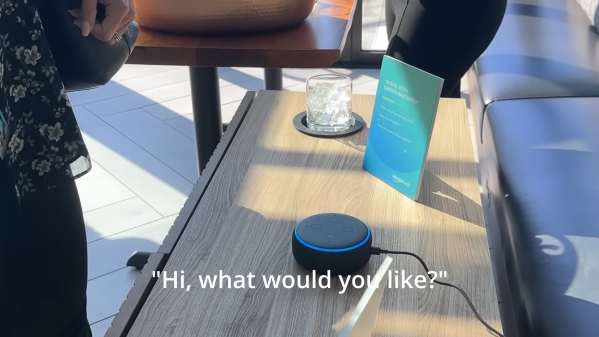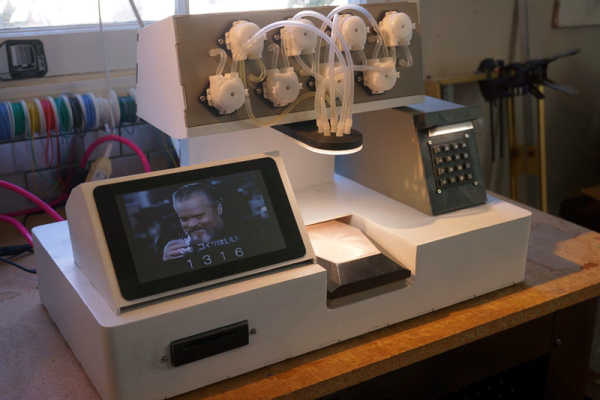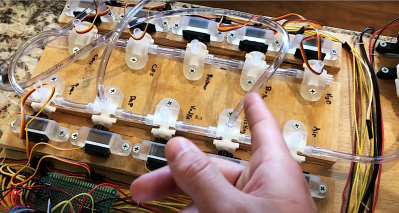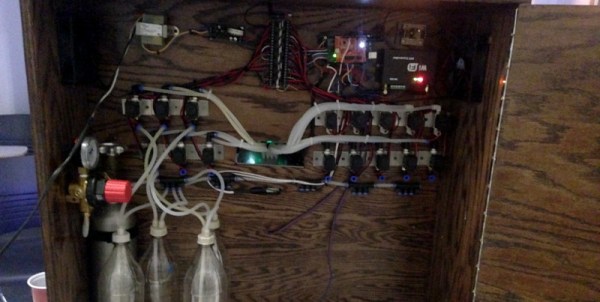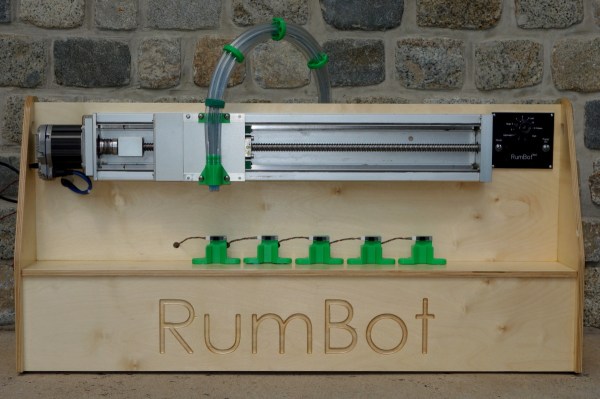[Audax] built an unassuming side table with a party trick. It could retract a glass inside and fill it up with bourbon. The nifty device gained plenty of positive attention online, leading to a commission from Amazon to build a new version. Thus, [Audax] set about a redesign to create an even more impressive drink delivery system. (Video, embedded below.)
The story is very much one of refinement and optimization, focusing on the challenges of building a customer-facing device. With just six weeks to create the new rig, [Audax] had to figure out how to make the machine sleeker and more compact for its debut at a special event. To achieve this, he eschewed the original frame design made of aluminium extrusion, going for a 3D-printed design instead. The wire nest of the original version was then subsequently eliminated by an outsourced PCB design. Other new features included a mobile app for control and an easier way to adjust pour size, for bigger or smaller drinks as desired. For ease of use, activation is via an Amazon Alexa Skill.
As is so often the way, a last minute hurdle came up, prompting [Audax] to fly to Seattle to troubleshoot the rig on site. Nevertheless, the automatic drink server came good in the end, and delivered on its promise. Video after the break.

